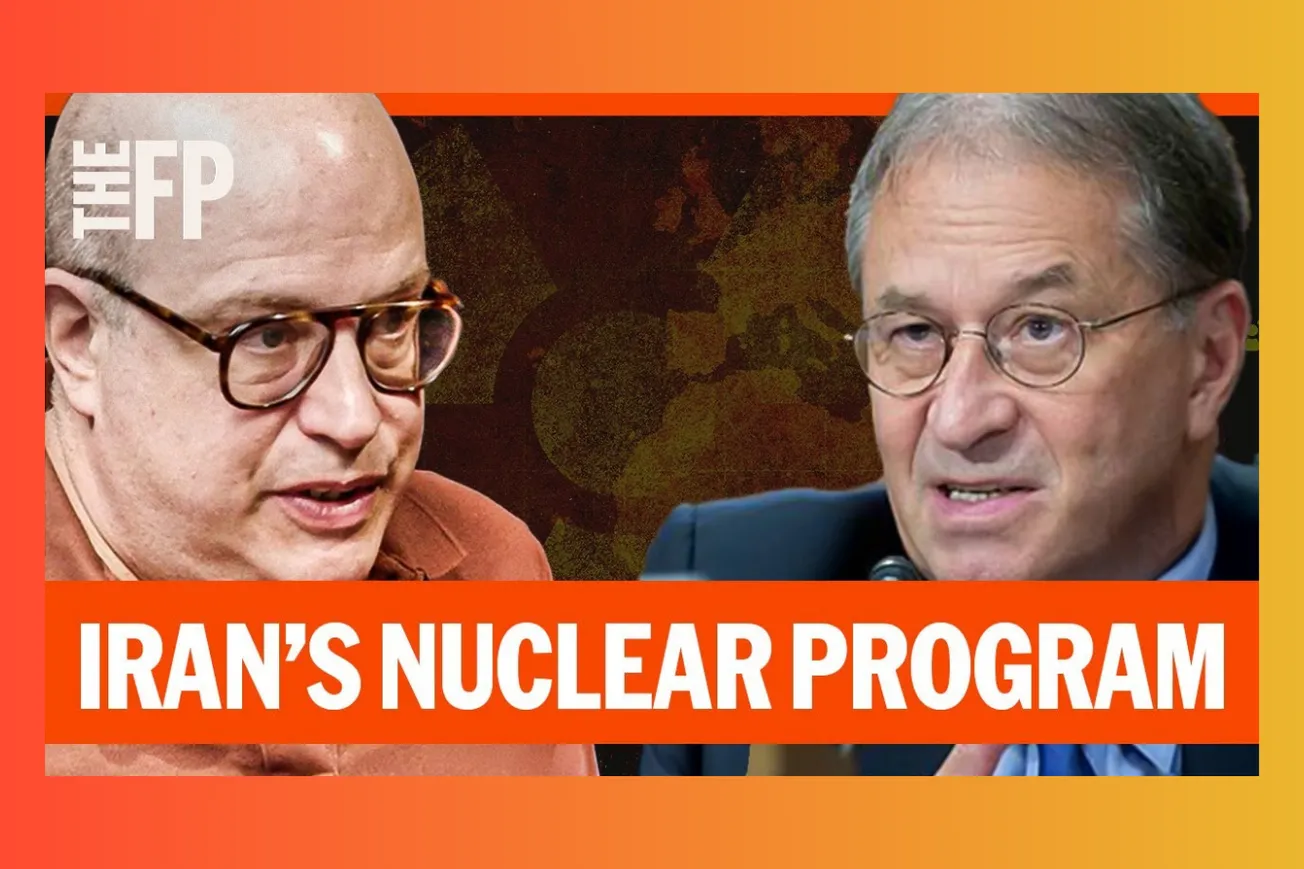Table of Contents
Former weapons inspector David Albright breaks down Iran's nuclear capabilities, Israel's targeted strikes, and why this isn't another Iraq WMD intelligence failure—but rather the most significant nuclear counter-proliferation operation in decades.
From uranium enrichment to weaponization programs, here's what Israel has actually accomplished and what comes next in preventing Iranian nuclear weapons.
Key Takeaways
- Iran enriched uranium to 60% purity—99% of the way to weapons-grade material with no peaceful civilian purpose
- Israel successfully eliminated key nuclear scientists, weaponization facilities, and uranium metal production capabilities at Isfahan
- Natanz underground enrichment facility suffered significant damage from earth-penetrating weapons, though full extent remains unclear
- Iran's nuclear program represents 15-20 years of preparation to build weapons rapidly once leadership makes the decision
- US intelligence assessments severely flawed by maintaining "light switch" model that Iran either has active weapons program or doesn't
- Military strikes have extended Iran's nuclear timeline from 6 months to potentially over a year for weapon development
- Fordo facility remains vulnerable despite underground construction due to ventilation, electrical, and access point weaknesses
- Regime collapse scenarios pose serious nuclear security risks with potential material dispersal to terrorist organizations
Beyond Iraq 2003: Why This Intelligence Is Different
David Albright, the former weapons inspector who correctly challenged Bush administration claims about Iraq's non-existent nuclear program, emphasizes fundamental differences between 2003 Iraq intelligence failures and current Iranian nuclear assessments.
While Iraq possessed no actual nuclear capabilities in 2003, Iran operates extensive declared and undeclared nuclear facilities discovered through rigorous international monitoring. The 2003 revelation of Iran's secret Natanz enrichment plant marked the beginning of decades of documented nuclear development.
Iran's program mirrors Iraq's situation in 1991 after Gulf War defeat—a substantial nuclear weapons program forced into international oversight. However, Iran's program continued developing under partial inspection, unlike Iraq's complete dismantlement.
Current intelligence draws from satellite imagery, international inspectors, and Israeli penetration of Iranian facilities rather than dubious exile sources that characterized Iraq assessments. The evidence base proves far more substantial and verifiable.
The Two-Track Program: Enrichment and Weaponization
Iran's nuclear program operates along parallel tracks designed to enable rapid weapons development. The public enrichment track, monitored by International Atomic Energy Agency inspectors, has systematically advanced toward weapons-grade uranium production.
Iran's decision to enrich uranium to 60% purity serves no civilian purpose and represents 99% of the effort required for weapons-grade material. Recent months saw Iran converting 20% enriched uranium stockpiles to 60% enriched material, essentially preparing for rapid weapons-grade production.
The secret weaponization track involves developing nuclear weapon components and delivery systems. This program, designated SPND (Organization of Defensive Innovation and Research), has operated for 15-20 years preparing infrastructure for rapid bomb construction.
Israel's strikes targeted both tracks simultaneously—eliminating enrichment capabilities at Natanz while destroying weaponization facilities, uranium metal production at Isfahan, and SPND headquarters and personnel.
Intelligence Assessment Failures: The Light Switch Problem
US intelligence community maintains a flawed "light switch" analytical model treating Iran's nuclear program as either fully active or completely inactive. This binary approach ignores the reality of nuclear weapons development as a preparatory process.
The 2007 National Intelligence Estimate's public conclusion that Iran's weapons program "ended in 2003" created analytical paralysis preventing recognition of continued weapons-related activities. European allies and Israel reject this assessment as divorced from observable evidence.
Iran's actual approach involves maintaining nuclear weapons development capabilities while avoiding formal decision to build weapons. This strategy enables rapid weaponization while providing plausible deniability about intentions until crossing the nuclear threshold.
Recent statements by Iranian officials like nuclear scientist Mohsen Fakhrizadeh (before his assassination) explicitly discussed non-missile delivery methods for nuclear weapons, confirming weaponization thinking beyond civilian nuclear applications.
Israel's Surgical Counter-Proliferation Campaign
Israel's military operations demonstrate unprecedented precision in targeting nuclear infrastructure while minimizing collateral damage. The campaign systematically eliminated key components across Iran's nuclear enterprise through intelligence-driven strikes.
Key targets included the underground Natanz enrichment facility housing 15,000 centrifuges, centrifuge manufacturing sites, uranium metal production at Isfahan, and SPND weaponization program headquarters. Nine top nuclear scientists were eliminated over several years of operations.
Earth-penetrating weapons successfully struck underground Natanz halls despite 80-meter depth and reinforced construction. Satellite analysis revealed three entrance wounds, though full damage assessment remains classified pending Israeli intelligence disclosure.
The precision strikes avoided civilian nuclear facilities while eliminating dual-use capabilities essential for weapons development. This surgical approach distinguishes current operations from broader military campaigns against nuclear states.
Fordo: The Crown Jewel's Vulnerabilities
The Fordo underground enrichment facility, built 80 meters under a mountain, originated during Iran's 2003-era crash nuclear weapons program called the Algadir project. Israeli intelligence seizure of Iran's nuclear archive in 2018 revealed extensive Fordo construction plans.
Despite fortress-like construction, Fordo possesses critical vulnerabilities including ventilation shafts, electrical systems, tunnel entrances, and dependency on external power sources. Underground facilities require extensive ventilation systems that create attack vectors.
Israel's apparent hesitation to strike Fordo may reflect intelligence indicating the facility isn't currently operational, with parking lots showing unusual absence of worker vehicles. Staff may be avoiding potentially targeted locations.
Fordo's destruction isn't necessarily required for Israeli strategic objectives if the facility remains inoperative and other nuclear infrastructure has been sufficiently degraded to extend Iran's nuclear timeline beyond acceptable thresholds.
The Weaponization Timeline Extension
Israel's campaign successfully extended Iran's nuclear weapons development timeline from approximately 6 months to over a year by targeting both enrichment and weaponization capabilities. This extension creates diplomatic and military response opportunities.
The 60% enriched uranium stockpiles represent the most immediate concern, requiring location and neutralization before potential weapons assembly. Iran's practice of storing enriched materials off-site from production facilities complicates targeting.
Weapons development requires converting enriched uranium gas into metal form suitable for weapons cores. Israel's destruction of Isfahan uranium metal production facility eliminates this critical capability, forcing Iran to rebuild sophisticated conversion processes.
Personnel losses among nuclear scientists create additional delays as Iran must replace specialized knowledge and institutional memory accumulated over decades of weapons-related research and development.
Radiation and Environmental Risks
Military destruction of nuclear facilities poses minimal radiation exposure risks due to Iran's uranium-based rather than plutonium-based program. Uranium proves far less radiotoxic than plutonium, enabling relatively safe facility targeting.
The primary chemical hazard involves uranium hexafluoride, the working material in centrifuge enrichment. Fluorine compounds pose serious respiratory threats within bombed buildings but remain localized and don't create widespread contamination.
International Atomic Energy Agency Director Rafael Grossi warned about fluorine dangers for personnel entering damaged facilities while confirming minimal external radiation risks. Previous uranium dispersal incidents in the United States demonstrated manageable environmental impacts.
Iran's attempts to exaggerate radiation risks for propaganda purposes contradict scientific assessments and historical precedents from nuclear facility accidents and military operations involving uranium materials.
Regime Collapse Nuclear Security Scenarios
Potential Iranian regime collapse creates serious nuclear security challenges similar to post-Soviet nuclear material protection programs. Iran's 90 million population and extensive nuclear infrastructure could face chaotic dispersal scenarios.
The 2003 Iraq invasion demonstrated inadequate preparation for securing nuclear materials during regime change. Iraqi nuclear facilities were abandoned and looted, with uranium materials scattered before international control was established.
Iran's nuclear materials include weapons-usable highly enriched uranium, sophisticated centrifuge technology, and weapons-related equipment that terrorist organizations might acquire during social breakdown. Regional terrorist groups possess greater technical capabilities than Iraqi looters.
International response would require rapid deployment of nuclear security teams, cooperation with successor Iranian authorities, and comprehensive inventory of nuclear materials before potential terrorist acquisition. No current boots-on-ground presence complicates rapid response.
Diplomatic Opportunities and Nuclear Deterrence
Israel's military success creates diplomatic leverage for comprehensive nuclear agreements more stringent than previous Joint Comprehensive Plan of Action terms. Demonstrated military capabilities provide credible enforcement mechanisms for future agreements.
Effective military action against Iran's nuclear program could strengthen global nuclear non-proliferation regime by demonstrating consequences for treaty violations. The precedent may deter other potential nuclear aspirants like Turkey, Saudi Arabia, and Egypt.
Previous nuclear disarmament successes in South Africa, Brazil, and post-Gulf War Iraq demonstrate that military pressure combined with diplomatic incentives can achieve nuclear program elimination. Iran's case could establish modern precedent.
Any future diplomatic agreement must include no uranium enrichment, intrusive inspections, and clear military consequences for violations. Economic sanctions alone proved insufficient to prevent Iran's nuclear advancement over two decades.
Common Questions
Q: How does this differ from 2003 Iraq WMD intelligence failures?
A: Unlike Iraq's non-existent program, Iran operates extensive documented nuclear facilities with substantial weapons-related activities verified by international inspectors.
Q: What makes Iran's 60% enriched uranium so dangerous?
A: It represents 99% of the technical effort required for weapons-grade uranium with no peaceful civilian applications, enabling rapid weapons development.
Q: Can Israel completely eliminate Iran's nuclear program through military means?
A: Complete elimination isn't possible, but extending timelines to over a year creates diplomatic opportunities and military response windows.
Q: What are the risks of Iranian nuclear materials falling into terrorist hands?
A: Regime collapse could scatter weapons-usable materials and technology, requiring rapid international nuclear security response similar to post-Soviet programs.
Q: How vulnerable is the underground Fordo facility?
A: Despite mountain construction, Fordo requires ventilation, electricity, and access systems that create multiple attack vectors for sophisticated military operations.
Israel's counter-proliferation campaign represents the most significant nuclear security operation since Iraqi program dismantlement in the 1990s. Success in extending Iran's nuclear timeline creates unprecedented opportunities for comprehensive diplomatic solutions backed by demonstrated military capabilities.
The operation's surgical precision and strategic focus offer lessons for future nuclear counter-proliferation efforts while strengthening global non-proliferation regime credibility.





